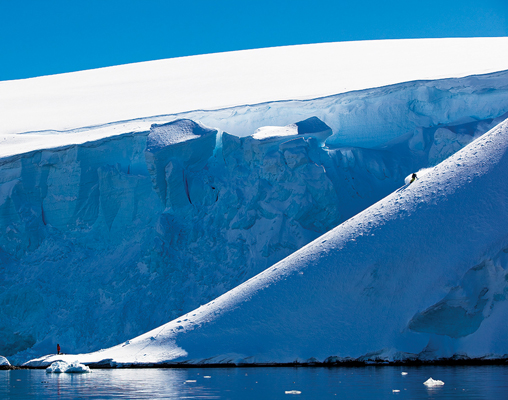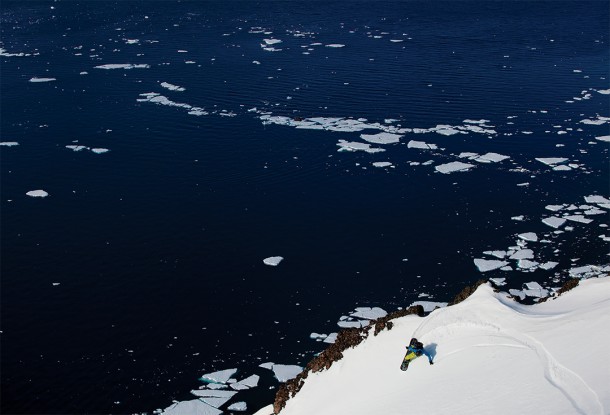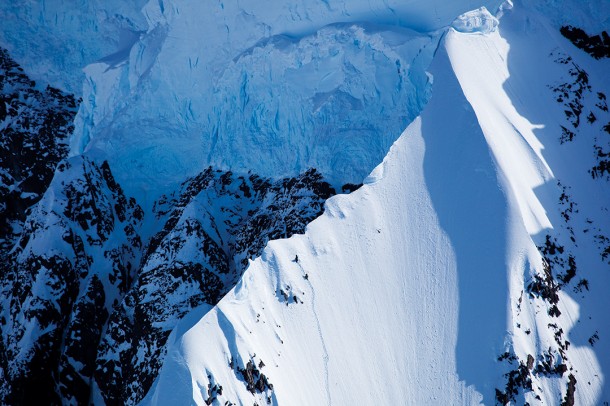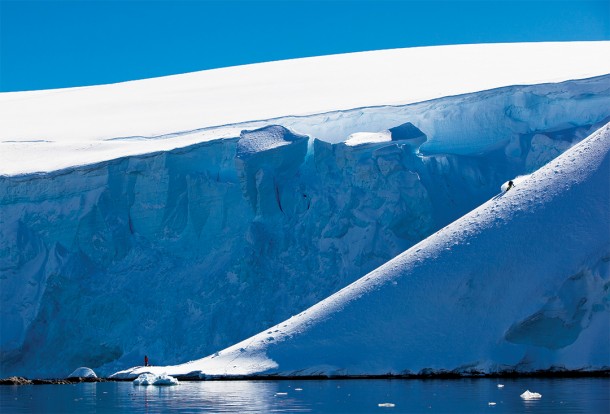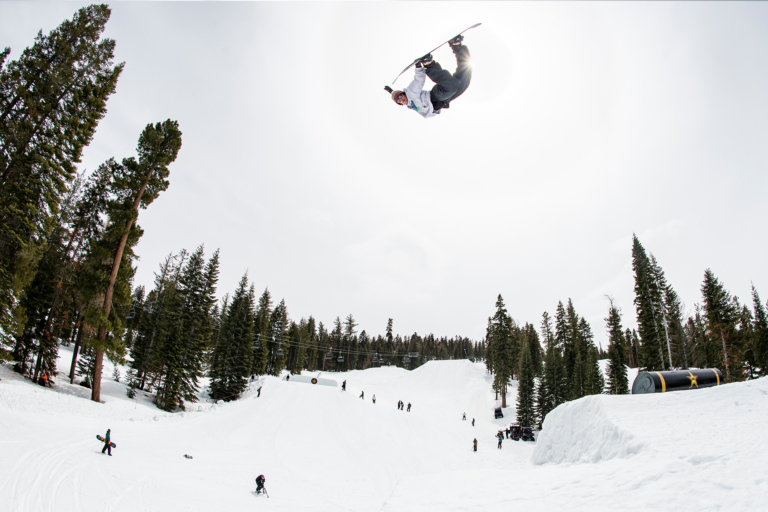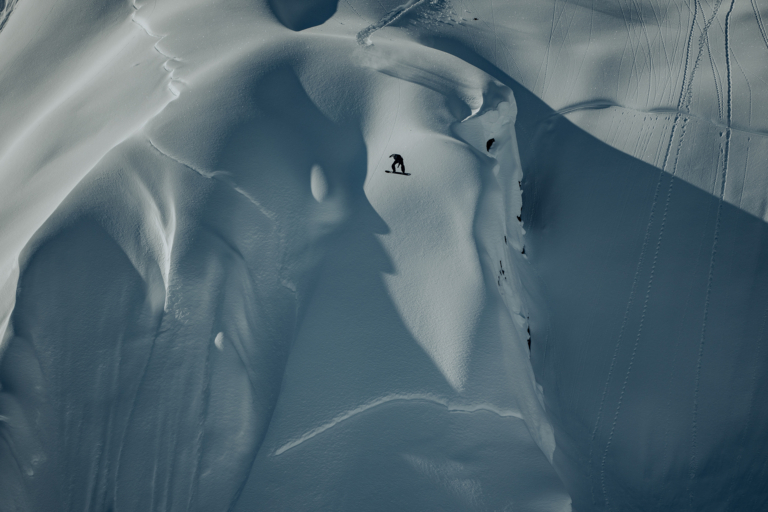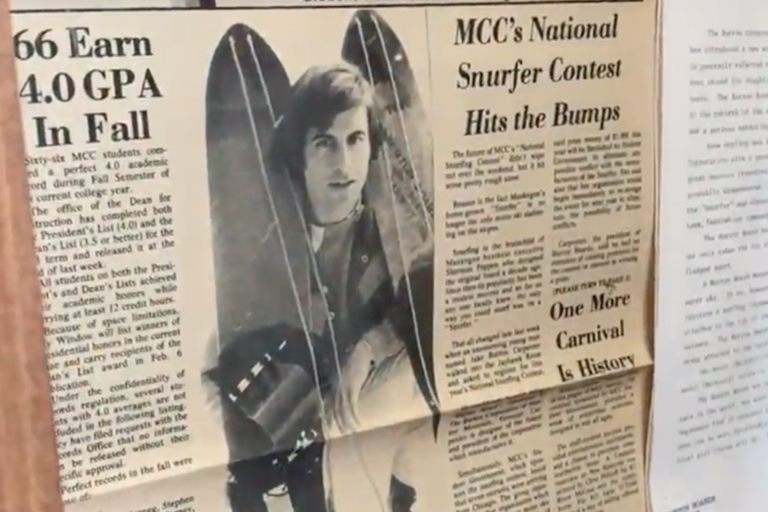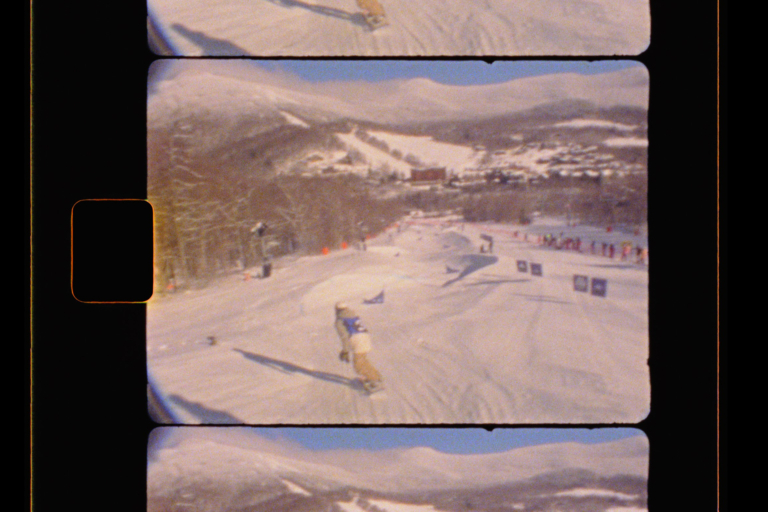Words: Jeremy Jones
Photos: Tero Repo
Originally featured in Snowboard Mag Vol. 10, Issue 2 | The 10 Year Anniversary Issue
Every once in a while, everything comes together perfectly. The uncontrollable factors like snow quality, avalanche stability, and weather line up flawlessly with the physical factors like nailing the approach, being able to cross the bergschrunds exactly where you thought, nailing the crux high on the face and not blowing yourself out wallowing in bottomless sugar. While filming for Deeper in Antarctica with Xavier De Le Rue, all these factors lined up perfectly allowing us to ride the ultimate line hours after first laying eyes on it. To a bystander it would have looked easy. But success that day started months prior in Chamonix, where Xavier and I suffered our biggest shutdown ever in the mountains.
We spent three weeks in Chamonix with the hopes of riding the Blanche de Peuterey. Each attempt required a two-day approach, middle of the night rappels and running the gauntlet under the serac riddled South Face of Mont Blanc. On our third attempt, five hours into our day and high on the face, a bad feeling by the third person in our group turned us around. The window had closed. I was on a plane the next morning headed for home.
Goal number one is always coming home safe, and riding your objective is the cherry on top. We had played in the most dangerous playground in the world and survived. When I switched to hiking my lines, I realized there are so many more variables getting to the top that it usually takes multiple attempts and weeks of planning. Getting shutdown is more common than summits, and learning to be OK with this is the key to surviving the big mountain game. Hence the tagline to my last film, “The Journey is the Reward.”
Fast-forward three months, and Xavier and I are on a boat crossing the Drake Passage off the tip of South America. 72 hours later we arrive in Antarctica, the most mind-boggling, out of this world land of icebergs, whales, dolphins, seals and penguins. But the real star of the show is the jagged, spine littered steeps that come jutting out of the ocean. It is a land where the rolling hills are covered in water and just the high peaks rise above the ocean’s surface. There is no fluff, all meat. We learned instantly that the second we stepped off the Zodiac we were entering the tiger pit. Often times the biggest crux was transferring from the boat to land. Serac walls soared straight out of the water and crevasses lingered steps from the ocean’s edge. We would depart our cruise ship in the full high angle kit ready to go. In the Zodiac carrying crampons, we tied into the rope and would get on belay as we stepped onto land. It was like being teleported to the edge of a face high in the Alps, but we had lifejackets on.
Antarctica wasn’t only in its own realm as far as beauty, and the mountains and snow were like nowhere else on this planet. My lifetime of reading snow textures and aspects was out the window. At the start of the trip we would set out to ride what looked like a steep face covered perfectly in snow, only to find it 80 degrees, bulletproof ice and completely unrideable. But with an unprecedented run of sunny weather and endless daylight, by day five Xavier and I had gotten a handle on this new world. On the fifth morning we found ourselves in the Bay of the Seven Dwarfs, and we could not believe our eyes. It had trumped all previous locations on our trip. On all sides were the biggest, most dramatic mountains we had ever seen, a winter fairytale that even Disney’s most creative could not have dreamed up. Making sense of the madness was hard, but we settled on a perfectly shaped triangle just behind an island of penguins.
Cramponing out of the boat, a change to split mode and off we went. Three hours later we were at the base of the wall. An unwavering 65-degree face that appeared upside down towered above us. Upon seeing the steepness we knew that unless the snow was perfect, we would not be able to hold an edge on it. We had also learned that conditions change quickly; if the shadow hit the face or the wind picked up a few mph the top layer would freeze, and we would not be able to descend it. With trepidation we started up the face and over the bergschrund, entering the vertical world where time stands still and the rest of the world is irrelevant. Before long we found ourselves on top, chiseling platforms in order to strap in. Looking down the face I couldn’t get my head around the steepness. It was geometrically the most perfectly straight pitch – well into 60 degrees. But the snow was perfect. Four inches of warmed up winter snow on top of a hard surface. Enough grip to hold an edge, but not too soft to create massive sluffs. As my edge sunk into my first turn, fear vanished and I transcended to that indescribable, special place that we all live for.
Xavier and I were speechless as we regrouped at the bottom. We were relegated to laughter and screams of joy. It was the payoff we tried so hard for in Chamonix. We had been pushed to our limit, a limit that was far greater than it had been before the Chamonix trip. It was all connected. Without the lessons learned both mentally and physically in Chamonix, what we accomplished in Antarctica would not have been possible. Descents like this should take weeks, months or years of scoping and waiting for the perfect day. You are not supposed to walk up to them the first day and ride them. To confirm our good fortune upon arrival to the main ship, our trip leader pointed out a peak across the bay and said, “I spent three weeks in a rainstorm trying the highest peak in the area and never even saw the mountain.” Call it karma or call it luck, you play the game long enough and once in a while you score harder than you could ever have dreamed of.
